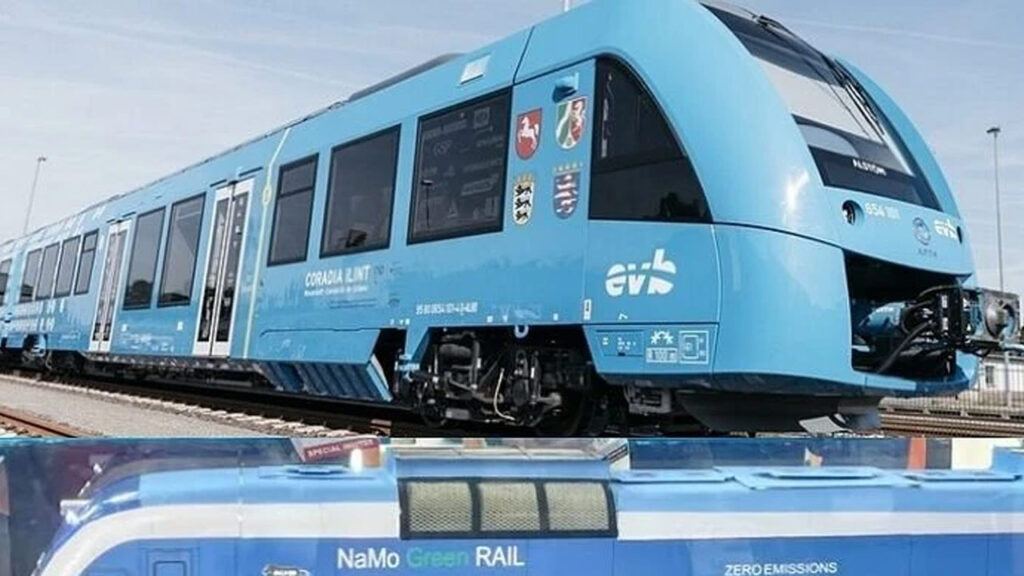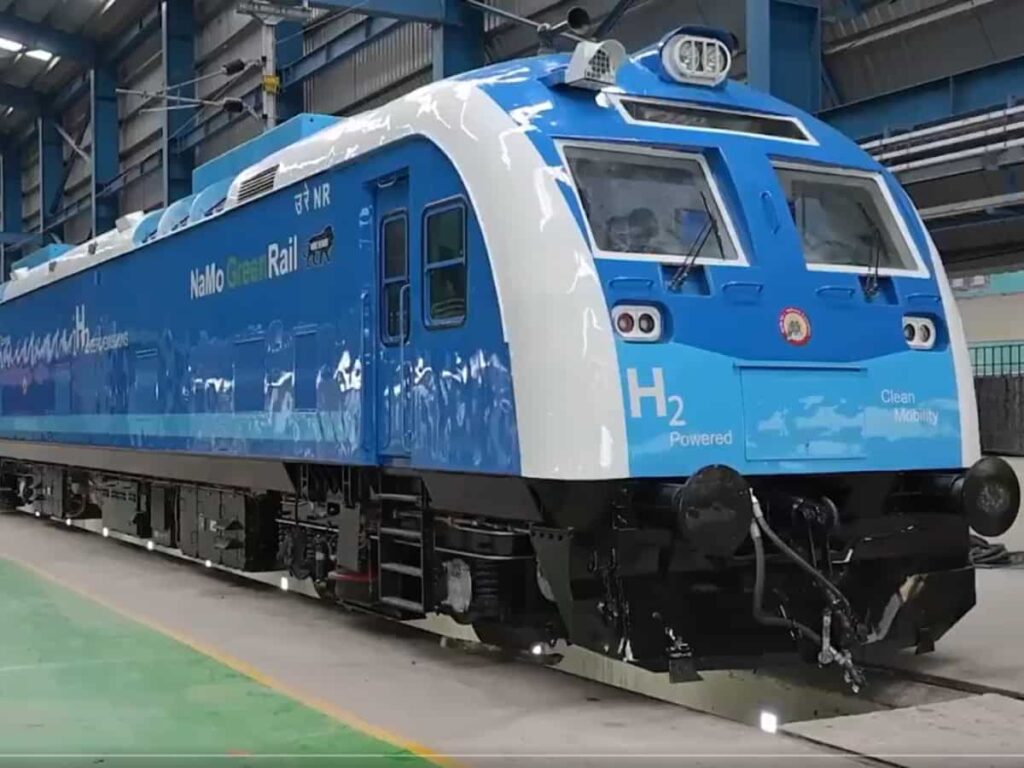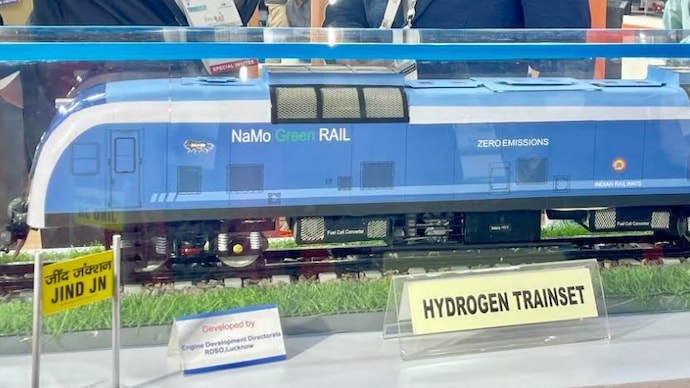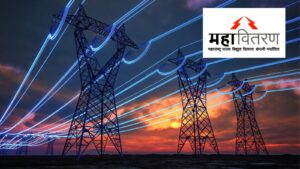India’s First Hydrogen Train Set for Trial Run: A Clean Leap Forward in Rail Innovation

India’s First Hydrogen Train Set for Trial Run: A Clean Leap Forward in Rail Innovation
A major stride in India’s green mobility journey is nearing the tracks. The nation’s first hydrogen-powered train, currently under construction at the Integral Coach Factory (ICF) in Chennai, is almost ready to roll out. Designed to deliver a blend of high performance and environmental consciousness, this upcoming train marks a significant chapter in the modernization of Indian Railways.
Railway Minister Ashwini Vaishnaw recently gave the public its first look at the hydrogen train through a video posted online. The footage highlighted not just the exterior design but also revealed some of the key technical components, offering a clear indication of the engineering prowess behind the project. The train carries the temporary title “Namo Green Rail”, prominently displayed on its blue-colored engine, hinting at both innovation and identity.
Built with a 1,200 horsepower power unit, the hydrogen train is designed to reach speeds of up to 110 kilometers per hour. Its speed and power capabilities place it in the category of high-performance trains, standing alongside the Vande Bharat Express as another successful step under the Make in India initiative. The design involves a total of 10 coaches, with engines positioned at both the front and rear ends to ensure balanced traction and smooth operation.

The project is not just about new technology — it also involves clever engineering repurposing. Two traditional 1,600 HP double diesel engines have been modified and reengineered into a 1,200 HP hydrogen-compatible unit, a significant transformation carried out entirely within ICF Chennai. This highlights India’s growing ability to innovate using existing infrastructure and technical talent.
The upcoming trial runs are set to take place on the Jind–Sonipat route in Haryana. During these tests, the train will operate under full-load conditions, simulating real-world scenarios by carrying weights equivalent to a full passenger capacity — which is expected to be 2,638 passengers. This approach ensures that the performance data gathered reflects actual usage, helping engineers fine-tune operations before the train is cleared for public service.

Hydrogen, often referred to as the cleanest fuel, plays a central role in this transition. As a zero-emission energy source, hydrogen fuel cells produce only water vapor and heat as byproducts. With Indian Railways committed to becoming a net-zero carbon emitter by 2030, this hydrogen train is not just a technical project — it’s part of a much larger climate and sustainability strategy.
The launch of the Namo Green Rail prototype signals more than just technological progress. It’s a strong message that India is not only participating in the global shift toward clean energy, but also creating solutions tailored for its own growing population and infrastructure needs. As the train nears its trial phase, the nation watches with anticipation. What began as an announcement in the Rajya Sabha in 2023 is now taking physical form on the tracks of Haryana.











